Visual and olfactory cues in the homing behaviour of Pseudomyrmex boopis
In the recent paper “Multisensory homing in the neotropical understory twig-nesting ant Pseudomyrmex boopis (Hymenoptera: Formicidae)” published in Myrmecological News, Daniella Prince and Steve Yanoviak investigate the role of visual and olfactory cues in the homing behaviour of Pseudomyrmex boopis. This ant has large compound eyes, is diurnal, and lives in the understory. Here, Daniella shares some amazing pictures and videos from the work behind the study.
A Photoblog contribution by Daniella Prince
All pictures and videos are © Daniella Prince.
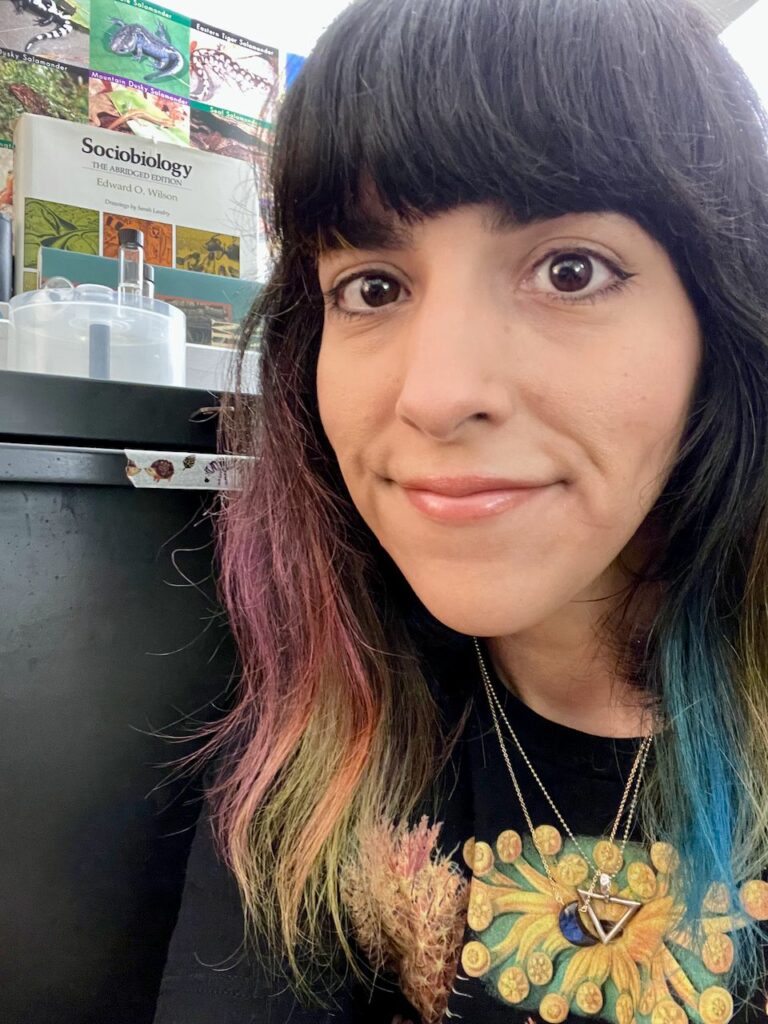
Edited by Gaurav Agavekar and Patrick Krapf

The star of this story is Pseudomyrmex boopis (seen here at a pollen bait), a charming twig-nesting ant found in the neotropics. Unlike most Pseudomyrmex, P. boopis live in dead twigs on or near the ground in forest understories. They are most conspicuous when they are foraging on leaves—an activity that often takes up most of their time outside the nest. They have large, elongated eyes and react swiftly to nearby movements. During their trips between nest twigs and foraging areas, P. boopis leap between leaves, stems, and the ground. This seemingly visually guided behavior inspired us to investigate the senses used by P. boopis as they walk home.

Pseudomyrmex boopis nest in small, preexisting cavities. Colonies are spread across multiple twigs. They are not aggressive ants, but workers will certainly flare their mandibles and antennate furiously if you disturb their nest.

We began our study by observing foragers and following their path to their twig nests. We applied a dab of paint to the gaster of some ants to ensure they would return to the nest and forage normally after being marked.
We conducted our experiments on Barro Colorado Island, Panama, which is a seasonally moist lowland forest with a research facility administered by the Smithsonian Tropical Research Institute. Prior to this study, we determined that P. boopis is diurnal and foragers return to the nest an hour or so before sunset when it is already pretty dark in the understory.
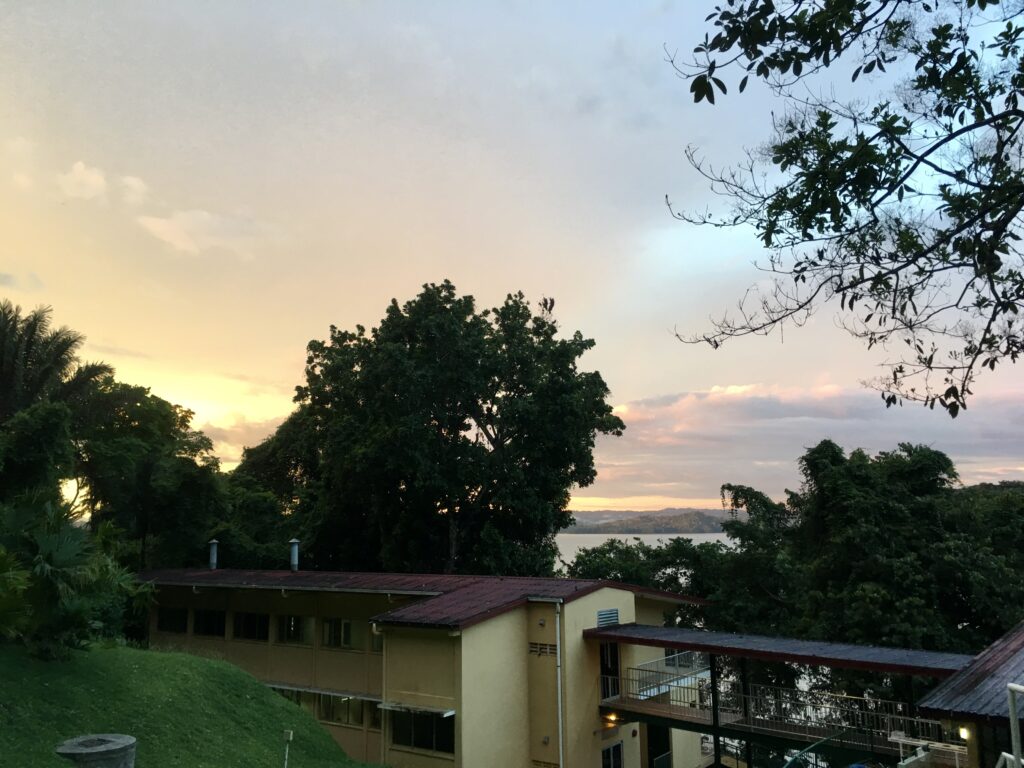
Our goal was to manipulate vision and olfaction in different combinations using paint over the compound eyes and ocelli, and deantennation. Then, we measured the ants’ homing success and homing efficiency after displacement. We collected workers exiting the nest earlier in the day and took them to the lab. I (Daniella) anesthetized and painted around 250 ants from 27 nest twigs for this project.
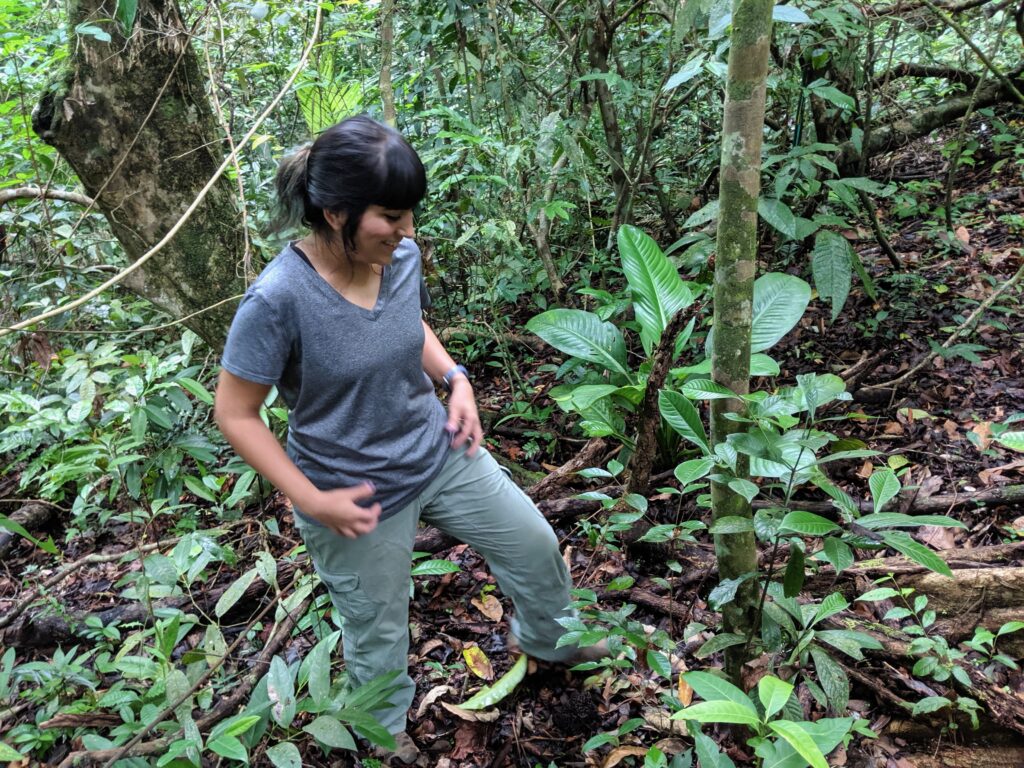
Here are a couple of P. boopis workers in the lab with only their compound eyes covered, and an unpainted worker. (Note: ants used in the study didn’t interact
Around 90 minutes before sunset, we returned to the nest twig and released ants 35 centimeters away from the entrance to the cavity. Here is a successful and efficient trial of a control. The worker’s gaster is marked with white paint and starts moving immediately on the left side of the screen. She moves up to the twig, then heads left before finally entering the cavity. In the center of the screen at the beginning, you may see a jumping spider standing on the nest twig. These spiders were frequently found near P. boopis nest twig entrances and were seen stealing pupae being carried by workers.
Workers with their compound eyes and ocelli covered (shown here) mostly wandered near their release points and did not return to the nest entrance. The same was true for each treatment that had their compound eyes covered, suggesting they are the primary structure involved in homing behavior. Interestingly, the ants with their ocelli covered were successful, but inefficient once they reached the nest twig. Deantennated workers took longer to home and were similarly inefficient. So, P. boopis need vision and olfaction to be successful and efficient, with the compound eyes being a basic requirement.
Another cool thing we found was that the compound eyes are key in predator avoidance. Almost 25% of ants with compound eyes covered were predated upon. The culprits were Odontomachus bauri, Ectatomma ruidum, jumping spiders, and Ectatomma tuberculatum (pictured here). Odontomachus bauri was the most common predator and was often seen stalking nest entrances.
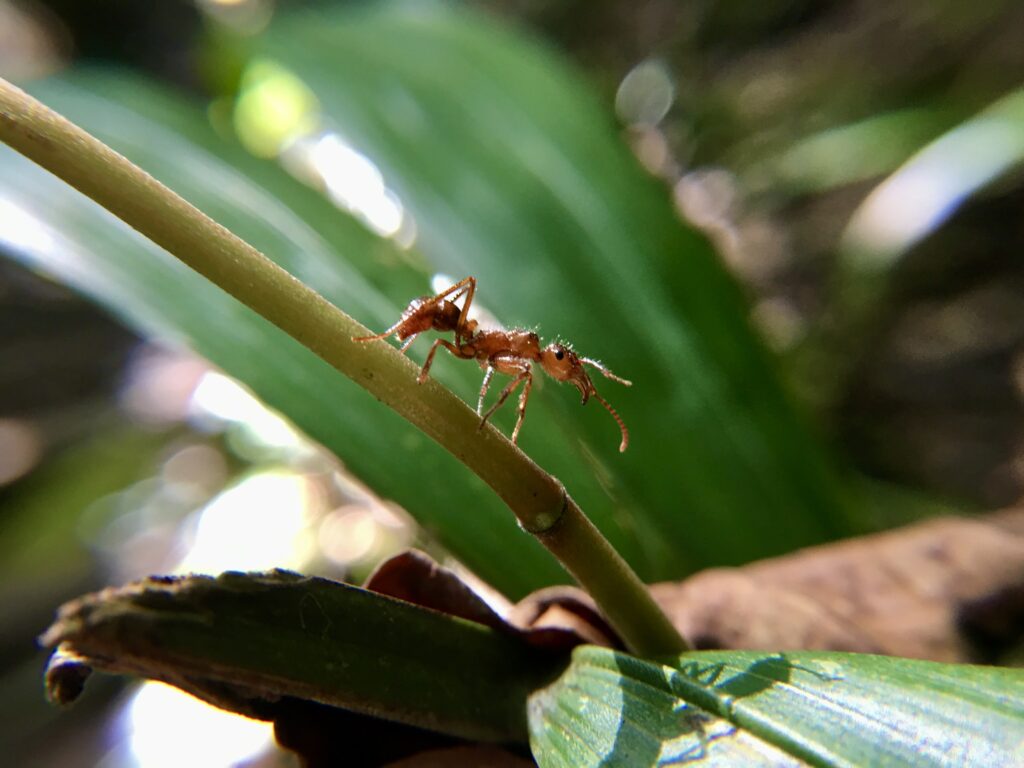
One of the trickiest things about studying P. boopis is the existence of Synemosyna americana, a jumping spider that specifically mimics P. boopis. I must admit that I spent a little bit too much time once or twice following this “ant” only to suddenly see it levitating.
Overall, working in the understory with P. boopis was a pleasure. Having the opportunity to enjoy the view from the canopy of BCI was also a plus.




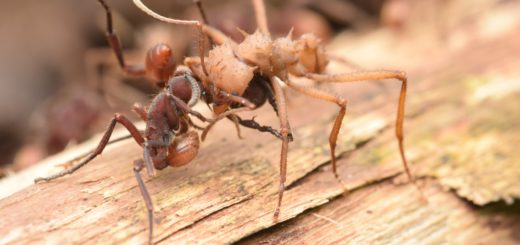
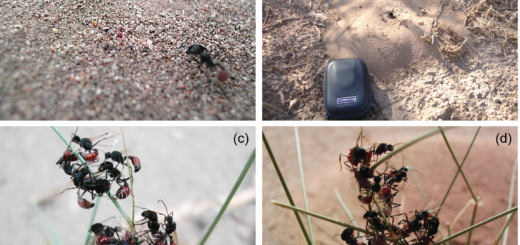
Recent Comments